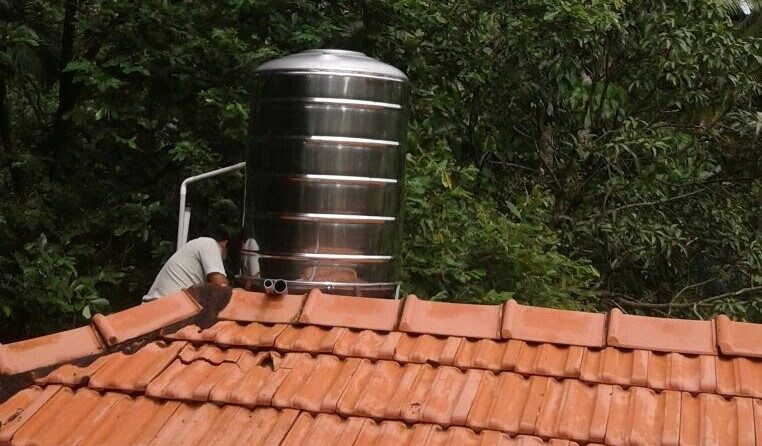Skip to content
Skip to footer

Selecting the right location for installing water storage tanks is crucial for ensuring efficient water management and accessibility. In India, where water resources can be scarce and unevenly distributed, careful consideration of the tank’s location can greatly enhance its effectiveness. Here’s a comprehensive guide to help you choose the best location for your water storage tanks.
Understanding the water demand and supply in your area is the first step. Analyze your household or facility’s water consumption patterns and the reliability of the water supply. If you have irregular water supply, positioning the tank in a central location that can easily be refilled when water is available is key. For large-scale applications, such as agricultural use, factor in the volume of water required and the frequency of replenishment.
For gravity-fed systems, positioning the tank at a higher elevation is beneficial. Elevated locations allow gravity to assist in water flow, reducing the need for additional pumping. However, ensure that the location is easily accessible for maintenance and inspection. A high position should be safe, stable, and not prone to erosion or flooding.
The tank should be placed close to the water source to minimize the length of the pipeline required. This helps in reducing potential water losses and ensures a more efficient supply chain. However, avoid placing the tank too close to the source if it risks contamination from nearby pollutants.
Consider the environmental conditions of the proposed location. Tanks should be installed in areas that are protected from extreme weather conditions, such as direct sunlight, heavy rain, and high winds. Sunlight can increase water temperature and promote algae growth, so consider placing the tank in a shaded area if possible. Additionally, ensure the location is free from potential contamination sources like sewage or chemical spills.
The chosen site must be stable enough to support the weight of the filled tank. The ground should be level and compacted to prevent shifting or tilting. If you’re installing a large tank, consult with a structural engineer to ensure the foundation is robust and capable of supporting the tank’s weight when full.

If you anticipate the need for additional water storage in the future, plan for future expansion when selecting your tank location. Leaving space for additional tanks or related infrastructure can save time and resources later on. Additionally, avoid placing the tank in a location where future construction or landscaping could obstruct access or increase maintenance challenges.
Familiarize yourself with local regulations and guidelines concerning water storage tank installation. Different states or municipalities in India may have specific rules regarding the placement, size, and type of water tanks. Compliance with these regulations not only ensures legal adherence but also contributes to community safety and environmental protection.
Regular maintenance is essential for the longevity and efficiency of water storage tanks. Select a location that allows easy access for cleaning, repairs, and inspections. Ensure there is sufficient space around the tank for maintenance personnel and equipment to operate without obstruction.
While functionality is paramount, the visual impact of the water tank should also be considered, especially in residential areas. Choose a location that minimizes the visual impact on your property while maintaining practicality. In some cases, landscaping or screening can help integrate the tank into the surrounding environment.
Finally, consulting with professionals such as civil engineers, water management experts, or contractors can provide valuable insights tailored to your specific needs and location. Their expertise can help in making informed decisions that optimize the tank’s performance and longevity.
By carefully considering these factors, you can select an optimal location for installing water storage tanks that enhances efficiency, accessibility, and overall water management. In a country like India, where water resource management is vital, thoughtful planning ensures that your water storage solution serves its purpose effectively and sustainably.